In the 1930s, it was still possible to create a one-off car for driving on city streets. One of these, a 1937 Custom Crown Imperial CW, was created as a limousine specifically for Major Edward Bowes—and it is still with us today.
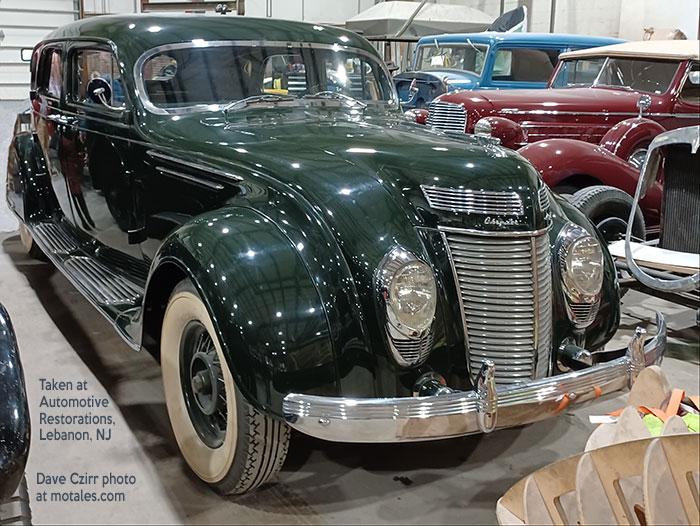
Major Edward T. Bowes had earned his rank, unlike one chicken-cooking colonel in his early years. After Bowes’ father died when he was just six years old, he started working—during elementary school—ending up with a real estate empire when he was 25. He lost it all in 1906 to the San Francisco earthquake and fire, but was soon managing the Capitol Theater with great success.
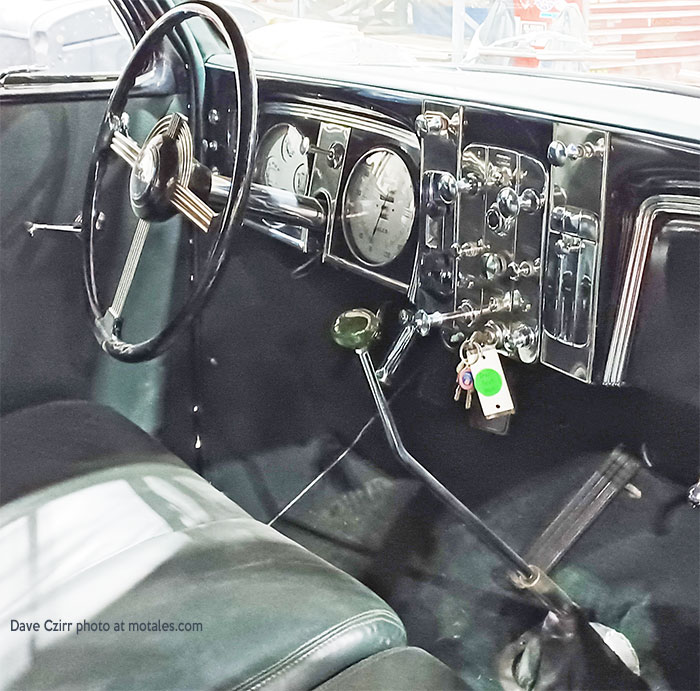
In 1922, he managed a new talent-contest radio show out of the theater; he became its master of ceremonies in 1925. In 1935 he took the show to national radio with Major Bowes’ Original Amateur Hour, ringing a gong when amateur performances went sour and starting telephone votes. It was the most popular program in the United States in 1935-36. [Hear some of his shows] But all that is off-topic when discussing a fine Imperial.
Bowes demanded a special car from Chrysler. Some claim he paid $25,000 for it (based on Look magazine’s story)—a stunning amount of money for that time. In reality, it appears to have been a loaner, enticing Bowes to accept Chrysler’s sponsorship of his show starting in 1938 (he could have easily purchased it, as the seventh highest paid person in the country).
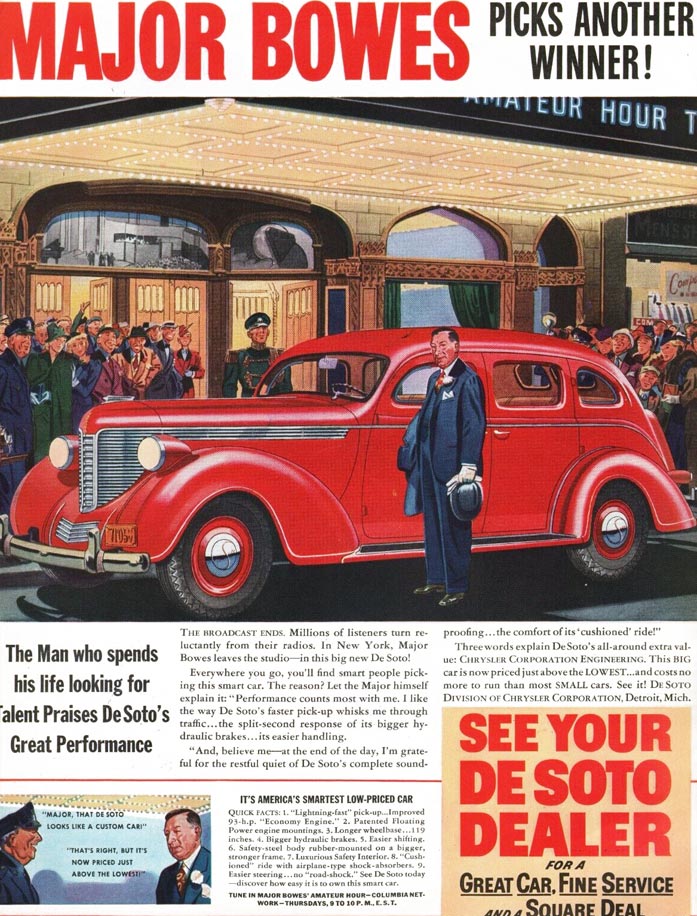
Having Bowes driving the Imperial was good publicity; auctioneer Hyman Ltd. wrote that “Chrysler built this car to be a rolling billboard.” Not only was Bowes the country’s most popular radio personality, but he took a troupe of performers on tour each year. For that reason, it was built as a mobile office, with a writing desk in the armrest and a swiveling jump seat for his secretary. The car also included a bar, a radio (still unusual then), and an electric razor. Bowes’ walking stick and umbrella could be stowed in a hollow foot rest.
The Major Bowes car is also unique but because only a few Imperial CW cars were made, and it appears only Bowes’ car had LeBaron coachwork. The CW earned some fame as the first production car to use a curved, single-piece windshield; though Chrysler would, ironically, later stick to split flat windshields after most others had switched.
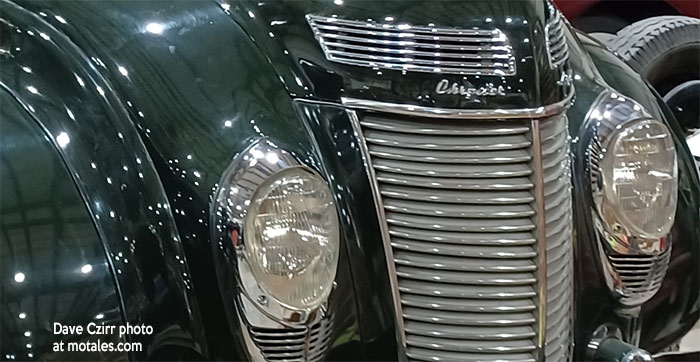
Just three long wheelbase CWs were built for 1937, all using the 1936 chassis but with 1937 bumpers, trim, and grilles: one for Major Bowes, one for the Hershey (chocolates) family, and one for Manuel Querzon, president of the Philippines (the first prime minister of Malaysia also chose an Imperial, but in 1956). The Hershey car did not survive, but the car in the Philippines did; each is unique. The streamlined Airflow styling makes the CW Imperial unique for the time; the 146-inch wheelbase made these special versions even more unique.
In 1940, Major Bowes broadcast a personal eulogy: “On Sunday last, Walter Chrysler was called home to his eternal rest. For many years he was close to my heart — I loved him as a brother. My personal loss seems irreparable.”
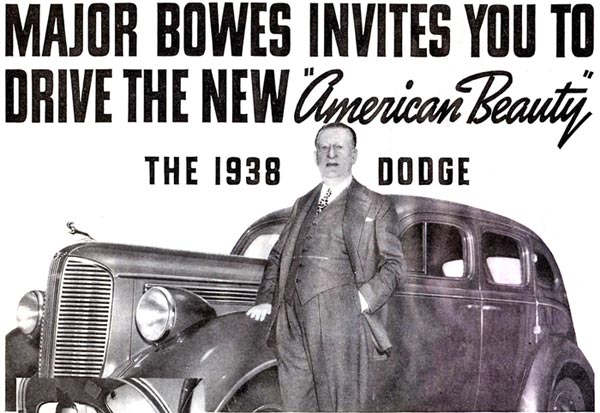
Would you buy a car from this man?
Bowes returned his Imperial in 1941 (which suggests it was a loaner) and Chrysler lent it to Admiral Chester Nimitz to be his staff car. From there, Hyman Ltd. traced it to a limousine service in San Diego, a used car lot which sold it to Johnny McLean in 1967, and then (after McLean’s death) to Frank Kleptz in 1979. The restoration took years, and included a restored 384 cubic inch L-head inline eight-cylinder (“straight-eight”) Chrysler engine with 150 bhp.
Dave Czirr spotted the “one of one” at Automotive Restorations in Lebanon, New Jersey earlier this year (January 2024). It had venetian blinds on the rear and rear quarter windows for privacy, hiding the 18k gold interior hardware, engraved jade embellishments on the door trim, and other luxury features. The car had recently been placed on sale by Mark Hyman’s collection; it has been fully restored for some years.
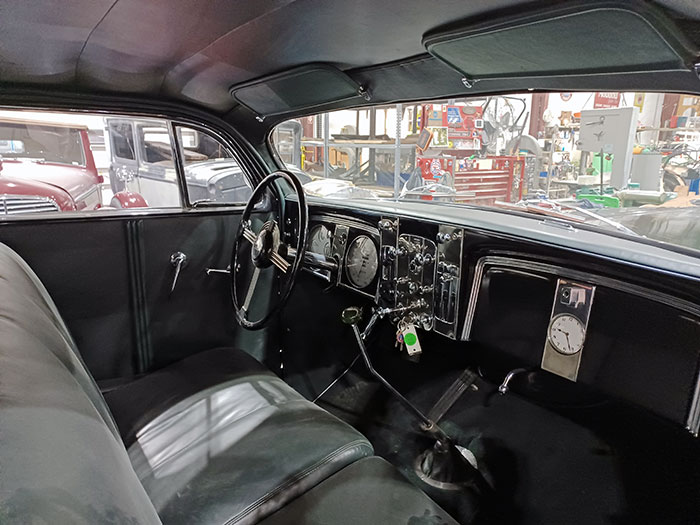
Major Bowes’ Original Amateur Hour (an interesting name since it was based on a prior show which Bowes had managed) was sponsored by Chrysler starting in 1938. He personally did the ads for Chrysler on his show, as was normal then, as those who have heard the Jack Benny radio show or seen Groucho Marx’s You Bet Your Life or The Burns and Allen Show (and so on) will remember. Bowes wasn’t used in regular car brochures, but Chrysler did produce a regular advertising column with quotes from Bowes and featured him in company ads.
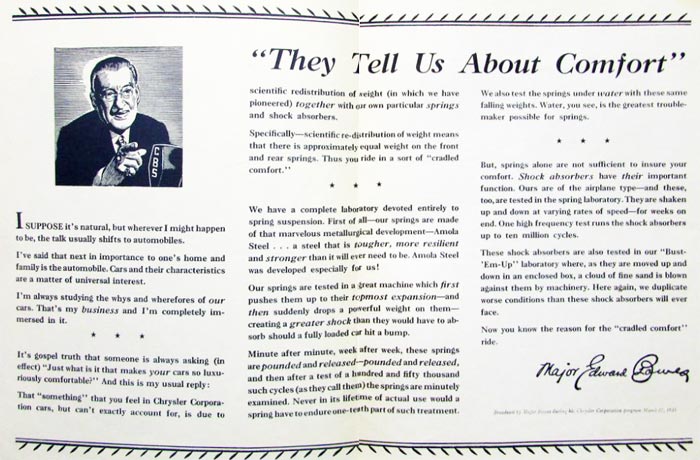
One of Bowes’ odder endorsements for Chrysler was a 1941 description of FluidDrive; he launched into a long, detailed explanation for the brochure, noting in the introduction, “My long association with and my keen, natural interest in this field of transportation makes me seek an apt comparison which the average person who is not an engineer will understand.” Whether he actually wrote any of the text is something we can leave for the reader; but he certainly asked for, and received, a fine car which is still in fine shape today.
Copyright © 2021-2025 Zatz LLC • Chrysler / Mopar car stories and history.
YouTube • Editorial Guidelines • Videos